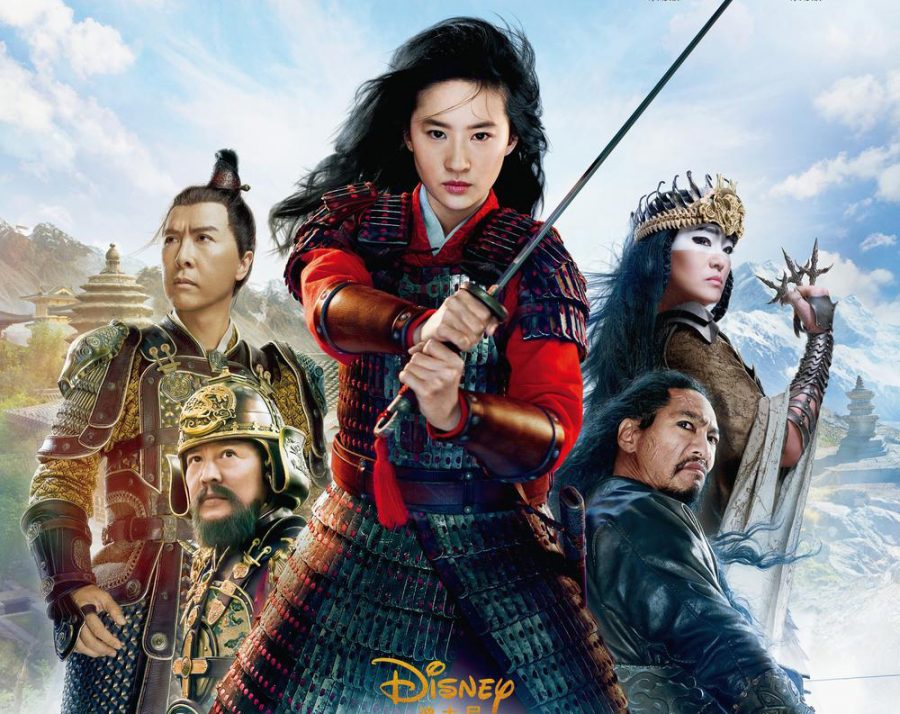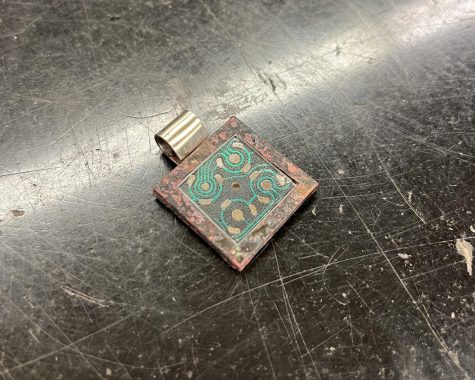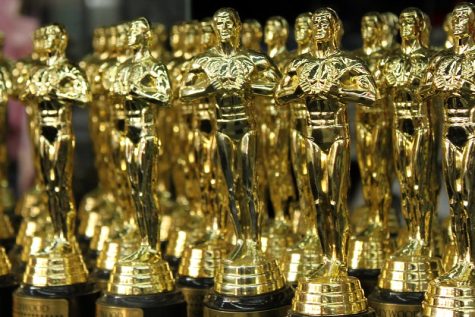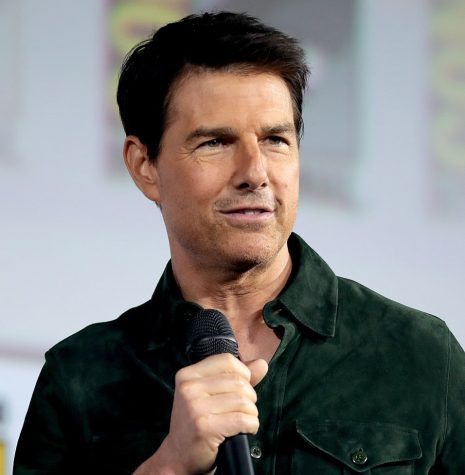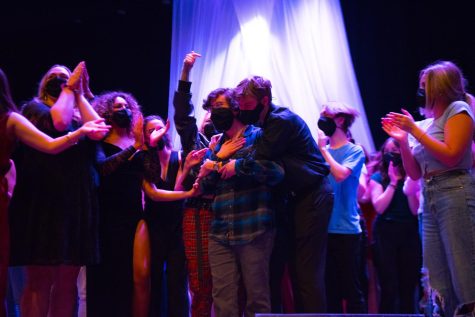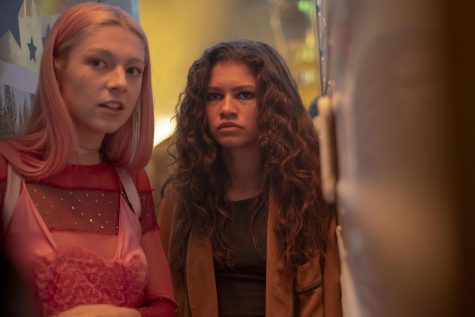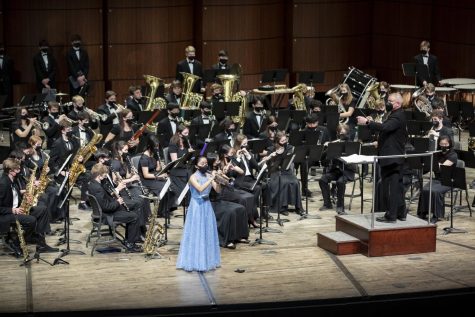Review: The live action ‘Mulan’ remake Is a knock-off abomination
Earlier this year, Disney announced they’d be releasing the “Mulan” live action remake directly to their video streaming service, Disney+. What they didn’t tell us is that it would cost 30 bucks, on top of a preexisting Disney+ membership, to watch…and it’s not worth it.
Disney has termed the “Mulan” film as “Premier Access” Disney+. Yes, Disney++, as I like to call it, is now a thing. While 30 bucks tacked onto a pre-existing, $7 monthly subscription may seem like a whole lot more than necessary, considering your entire family can bypass the theater and watch it from the comfort of the living room sofa, it’s a pretty good deal. Personally, I have to give it to Disney for this one; the up-charge is a clever and innovative way to get the film out there — safely — while recuperating from the dark spot that Hollywood has left in the wake of the pandemic. The only problem is that this movie is soulless and falls miles away from the reputation set by its cartoon counterpart.
Don’t get me wrong, I tried really, really hard to like this one. I’m Asian American, and would support a western movie with an all-Asian cast any day of the week (Yifei Liu as Mulan, Jet Li as the Emperor, Gong Li as the witch). We have “Crazy Rich Asians,” “The Farewell,” “The Joy Luck Club”… and that’s about it. In fact, the release of “Crazy Rich Asians” back in 2018 marked it as the first modern story with an all-Asian cast and an Asian-American lead in 25 years: the last, “The Joy Luck Club,” was in 1993. Asian cast members have doubtlessly been a minority in the Hollywood environment since the beginning, so I loved experiencing the widespread anticipation for this movie among my peers, and wanted it to be a huge hit, so big studios would continue producing movies with Asian actors.
Growing up, Mulan was always my favorite Disney princess. Not only because she was the token East Asian princess of the Disney franchise, but also because she set the standards for a strong-minded, independent female character, therefore breaking the damsel-in-distress model invoked by most other Disney Princesses at the time. Mulan was one of the few characters who had flaws and lost battles. However, instead of waiting around for her “Prince Charming” to save her, she overcame challenges on her own and became a worthy warrior. She proved she didn’t need to have masculine features to become successful; all it took was hard work and perseverance. Live action “Mulan” not only fell short on this character development aspect, but major elements that made animated “Mulan” into such a timeless masterpiece were omitted, leaving gaping holes in the storyline.
Controversy
Even before the movie’s official release to the public eye, I’d been hearing stories of controversy and public drama surrounding its cast, crew, and production. You’d think a Disney movie could skirt disputation but apparently not. “Mulan” has not only sparked criticism for its filming location where Uighur Muslims are detained, but also the star’s apparent support of Hong Kong police and the movie’s entirely white crew.
Controversy around the movie’s filming site started blowing up in early September of 2020 when viewers noted on social media that Disney thanked eight government entities in its movie credits to Xinjiang: a region in China’s Far West that is home to the Uighurs. The region’s predominantly Muslim, Turkic-speaking ethnic minority have lived for years under increasingly expansive surveillance and oppression. One entity among the credits included the police bureau in Turpan, an ancient Silk Road city in eastern Xinjiang that has a large Uighur population. According to the New York Times, this same bureau had been placed on a blacklist by the Trump administration in a list of entities that U.S. companies were forbidden to sell or supply products to.
Ignoring what the U.S. government had described as the “unlawful incarceration of over one million Muslims” in order to “accurately” depict the story of Mulan leaves a disgusting stain of ethical wrongdoing. Just before “Mulan’s” release in America, director Judd Apatow (who was not involved in the film) condemned Hollywood for their complicity: “Maybe Disney and Apple should SPEAK UP & try to help a million people who were abducted and put in CONCENTRATION CAMPS,” he wrote on Twitter on Sept. 9, 2020.
Rayhan Asat, an ethnic Uighur lawyer in Washington whose younger brother, Ekpar Asat, has been imprisoned in Xinjiang, said in a September 2020 interview with The New York Times that Disney giving credit to Xinjiang government agencies “runs counter to the ideals of those in the artistic, business and entertainment communities.”
“Devastatingly, Disney’s support amounts to collaboration and enables repression,” she added. “Those who claim to champion freedom in the world cannot afford to ignore such complicity.”
The film has received backlash from American politicians as well. U.S. Rep. Mike Gallagher (R-Wisc.) wrote on Twitter that “while the CCP is committing crimes against humanity in Xinjiang, @Disney thanked four of the propaganda departments that are lying to the world about these crimes. It also thanked the Turpan Public Security Bureau, which is on the entity list for its role in these atrocities.”
This isn’t the first time the film has come under political backlash. In mid-August of last year, supporters of the Hong Kong protests called for a boycott of the movie after its star, Liu Yifei, said she supported the city’s police, who have been criticized for their excessive use of force against demonstrators. An image Liu reposted on Weibo (a Chinese social network similar to Twitter, as Twitter is prohibited by the national government) showed Liu taking the side of the Hong Kong police: “I support the Hong Kong police. You can all attack me now,” the post read in Chinese. This post was supposedly quoted from a statement made by Fu Guohao, a reporter for a state-run Chinese newspaper, the Global Times. He was reportedly tied up and attacked during a demonstration at the Hong Kong airport the day before, after being accused of being an undercover police agent.
Liu had then added her own words onto the post (in Chinese): “I support the Hong Kong police, too.” Her post consequently initiated a series of #BoycottMulan posts on Twitter, as users accused the actress of supporting police brutality.
“How tone deaf do you have to be to support police brutality when you just filmed a character who is supposed to stand against oppression in its raw form?” questioned a leading post on the hashtag thread.
The movie’s all-white crew further worsened the cloud of controversy. Initially touted as a symbol of Disney and Hollywood’s increasing awareness of racial representation in movie production, the film tells a different story behind the camera. Upon noting the director, screenwriters, and costume designers were not Asian, nonetheless of Chinese descent, many anguished viewers took to Twitter to vent their frustrations. One social media user wrote, “You cannot just plop Asian actors in front of a camera and call it a day!” Echoing a similar disappointment, another user wrote, “There needs to be Chinese people behind the camera as well as in front of it for this (film) to even be close to racially representative.”
Personally, I took issue with a particular red carpet interview, hosted by Variety, featuring prominent costume designer Bina Daigeler. When questioned about her previous learning experience with Asian culture, Daigeler informed the outlet that her research for the job involved going to Europe and visiting “all the museums that had a Chinese department, and then (traveling) to China for three weeks.” It is beyond my understanding how such insufficient preparation and cultural knowledge could herald a film as “racially representative.” In fact, the idea that a non-Asian costume designer justifies their expertise with research in an European museum looks colonial.
Truth be told, the entire film reeks of fake authenticity. Featuring lanterns, fireworks, and even a panda, live action “Mulan” tries overly hard to be Chinese, when it instead comes off as stereotypical. Family names are butchered, the ballad is mishandled, and historical inaccuracies run rampant. Some eagle-eyed viewers have even pointed out that in the movie trailer, Mulan is seen living in a tulou hut, a traditional style of roundhouse. But this style of housing originates from Fujian, a region more than 1,000 kilometers away from Henan, the northern province Mulan is said to have hailed from. To make matters even worse, tulou huts were built centuries before Mulan’s lifetime, therefore making it extremely unlikely for the heroine to have ever inhabited such a place.
Chinese audiences have even compared it to “the taste of General Tso’s Chicken; it is cooked in a wok and served with chopsticks, but that doesn’t make it Chinese food,” according to SupChina.com.
So yes, I came into the movie knowing that major parts of its production process—film site, cast members, and crew—were riddled with cultural indecency. But even turning a blind eye to the film’s controversies and instead zoning in on its cinematography and storytelling, I would still give this film a devastatingly low review.
The Mary Sue
Mulan has always seemed like an outsider when categorized among other Disney princesses. She was one of few female characters churned out by Disney in the 1990s and early 2000s who wielded a strong, independent personality. She pulled herself up by her own bootstraps, and demonstrated to many young girls (including me) that hard work and perseverance would pay off.
This is where live action “Mulan” really slipped up. Instead of making Mulan’s character come off as strong, independent, and self-reliant, it instead encompassed a “Chosen One” persona. The screenwriters turned Mulan, a beloved Disney princess, into a Mary Sue, reminiscent of Rey from Star Wars. Two factors in particular stand out in the evaluation of a Mary Sue character: 1) the character does not go through a journey of development and 2) the universe of said film seems to revolve around her.
Specifically in this film, we are introduced to the concept of “qi”. Mulan has this pool of “qi” stored internally that basically grants her superhuman powers. We learn that when she went into training as a young child, she performed every task bestowed upon her perfectly. When put onto the battlefield, she is able to confront the Hun leader and slash him with his own sword almost effortlessly as if she’s performed it a thousand times before. Not once were we introduced to conflicts or challenges she faced, nor a “development” or “learning stage” to showcase character flaws. There is no journey, there is no realization, no internal or external conflict for that matter, there’s nothing. Instead, Mulan is born perfect: she succeeds at everything she tries, carries gallon-jugs of water for miles up a mountain, does backflips off of rooftops, and is destined to defeat the “bad guy.”
It Takes Feminism in the Wrong Direction
Recently, Disney has appeared desperate to embrace a theme of female empowerment in their films and has crashed and burned every time. First and foremost is the faulty definition of feminism Disney seems to have ingrained upon each of its productions: women empowerment is proving females can be as tough as males. In other words, a woman can do everything a man can.
This sentiment, by human nature, is false. A comparative study performed by the National Institute of Health examined the biceps brachii and vastus lateralis (not entirely sure what these are, but they’re muscles) of eight men and women in order to compare the strength and muscle characteristics between the two genders. Women were found to be approximately 52% and 66% as strong as men, due to their muscle structure and growing limits imposed by nature of the human body. Naturally, the average male is built faster, stronger, bigger, and more athletically inclined than the average female. What Disney tries to do is make females exactly like males; they are as fast, they are as strong, and they are as fit. But this is not female empowerment: this is females being males.
What Disney should’ve done instead was accentuate femininity, or what it means to be a woman. In other words, what women can be doing to contribute to society, how society can better respect those contributions, and how women, men, and all sexual identities between can work together in expressing their views. I’m not trying to imply that one gender is less capable than another at making respective contributions to society. Rather, male and female bodies are structured differently by birth; males are naturally more capable of performing certain physical tasks than females, but conversely, females are also naturally more capable of performing other kinds of tasks in comparison to males.
The 1998 cartoon rendition excelled in blurring the lines of gender and the importance of masculine features, showing how femininity and ingenuity actually helped defeat the Huns. When the army finally faces down Shan-Yu and his band of raiders at the mountain pass, Shang and his warriors find themselves woefully outmatched. It’s Mulan’s ingenuity––using a rocket to target the snowbank and cause an avalanche––that eventually buries the enemies. Here, the lead female character doesn’t use strength to prove herself, but rather use her own wit. In essence, this moment undercuts the value of physical strength, and indeed masculine traits, entirely.
Even the cartoon’s most popular song, blatantly titled “I’ll Make a Man Out of You,” immediately has double meaning. In it, Captain Li Shang challenges his recruits’ idea that gruffness and poor social habits are the measure of manhood, demonstrating to us again how there is strength in femininity, and that feminine people do not not need to forego their personality and behavior in order to gain agency.
The “You and I are not so different” Plot Hole
Perhaps one of the biggest let-downs of this film, the peculiar character dynamic between Mulan and Xian Lang (the antihero) further adds to a flimsy theme of feminism.
Xian Lang’s story is similar to that of Mulan: she is said to harbor “qi” internally that provides her with superhuman powers. Only Bori Khan, a leader of the Khanate faction, embraces Xian Lang’s power, but even then, he thinks of her as a subservient, a tool rather than someone worthy of respect. Each time she crosses paths with Mulan, Xian Lang stresses the parallels between them: “You and I are not so different.”
Lang seeks to join forces with Mulan throughout the movie, scheming to overthrow Bori Khan and the Emperor with their combined superpowers, effectively overthrowing the patriarchy and creating a new society in which women wield positions of power. However, Mulan confusingly rejects this proposal repeatedly, putting herself in a questionable position. Rather than helping to invoke the creation of a system where women are held in respectful positions, she acts out of national loyalty. This action on the part of Mulan really puts her motivation and righteousness into question, and remains a perplexing component of the storyline. The fact that Lang is making a totally feasible point that the film never meaningfully engages with leaves us a loose end, a gaping hole in the narrative.
Furthermore, Lang’s death deserved more justice on the part of filmmakers. Even with the power of “qi” on her side as well as the capability of taking down 50 full-grown men single handedly, she is easily killed off by a single stray arrow. With her dying breath, Lang tells Mulan, “Take your place.” But the place she’s taking remains in a society that shuns and vilifies powerful women, something that Lang fought to extinguish her entire life but ultimately failed to do. Xian Lang deserves more respect; I find her character more heroic than that of Mulan herself.
The Final Verdict
Live action “Mulan” is everything that it tries not to be: it comes across as problematic, culturally insensitive, and downright unethical. From gaping plot holes to apparent character underdevelopment, this film truly reveals the deep structural, racial inequalities Hollywood has tried so hard to evade.
Director Niki Caro just wasn’t up to it.
The whole film was cringe.

